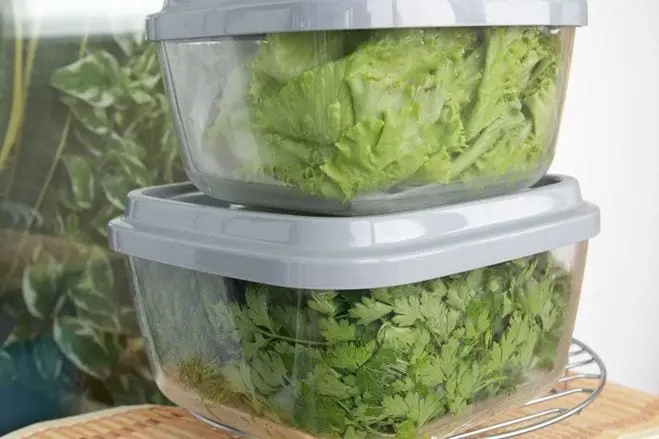Contents
Description
The pleasant spicy aroma and tart taste of parsley allows it to be used in many dishes to balance the taste. Parsley or curly parsley belongs to small plants of the umbrella family. Parsley grows wild on the Mediterranean coast and in southern Europe, and is cultivated in many countries around the world.
“Growing on a stone” (from the Latin “petrus” (“stone”), this is how the name PETRUSHKA is translated from Latin.
These greens not only impart a light sweetish-tart taste to dishes, but also saturate the body with the necessary nutrients. Freshly frozen parsley retains its nutritional properties for several months, and if stored properly, up to one year.
Composition and calorie content of parsley

- Calorie content of parsley 49 kcal
- Fat 0.4 grams
- Protein 3.7 grams
- Carbohydrates 7.6 grams
- Water 85 grams
- Dietary fiber 2.1 grams
- Organic acids 0.1 grams
- Starch 0.1 grams
- Mono- and disaccharides 6.4 grams
- Vitamins A, B1, B2, B5, B6, B9, C, E, H, K, PP, Choline
- Minerals Potassium (800 mg.), Calcium (245 mg.), Magnesium (85 mg.), Sodium (34 mg.),
- Phosphorus (95 mg), Iron (1.9 mg).
The benefits of parsley

Parsley contains many vitamins and trace elements – ascorbic and nicotinic acid, thiamine, carotene, riboflavin, retinol, flavonoids and phytoncides, as well as potassium, calcium, magnesium, iron, phosphorus.
Parsley is known for its anti-inflammatory and diuretic properties. It is recommended to use it to strengthen the gums, improve appetite and digestion, as well as remove salts from the body.
For cystitis, urolithiasis and other diseases of the kidneys and liver, parsley is also shown.
Parsley harm
Parsley is absolutely safe for many herbs, but pregnant women and people with inflammatory kidney and liver diseases should eat it in moderation.
Parsley in cooking

Parsley is widely used in Ukrainian, Brazilian, Middle Eastern, Mediterranean and American cuisine. The roots and fresh or dry leaves of parsley are often used to flavor dishes and prepare preserves. Parsley, dry or fresh, is one of the most popular spices.
Parsley is a popular ingredient in various salads and snacks; it is added to broths, soups and borscht, meat and fish dishes. Greens are served along with potatoes, rice, added to stews, sauces, casseroles and omelets. The famous Italian gremolata sauce is also made from parsley.
Parsley for face
Parsley has everything your skin needs – that’s a fact. One bunch of parsley can replace at least half (if not more) of the facial skincare in your makeup bag.

Parsley contains:
- Beneficial acids: ascorbic (against wrinkles), nicotinic (against dull complexion), folic (against bacteria and inflammation).
- Carotene – against aggressive sunlight.
- Pectin – against microtrauma, scars, scars.
- Flavonoids – are responsible for collagen production.
- Calcium, phosphorus – are responsible for skin whitening, get rid of age spots
- Magnesium, iron – as well as nicotinic acid – improve complexion.
- Apigenin and luteolin are powerful antioxidants.
- Riboflavin – renews skin cells.
- Retinol – for smooth, fresh, even skin.
- Potassium – moisturizes all layers of the skin.
Parsley in facial cosmetology
Another definite plus of parsley is its availability. You can find it in any supermarket or vegetable stand, grow in your garden, or even on your windowsill. It costs a penny – like greens, like seeds. Growing it is not difficult at all, but that’s another story.
You can also easily prepare your skin care products at home. Minimum products – maximum benefits. And you no longer need an endless series of creams that do not fit or do not help – a miracle – greens are always on guard for your beauty and health.
Parsley Whitening Face Mask

You will need:
- parsley leaves;
- dandelion leaves;
- mineral water.
What to do?
First, release gas from the mineral water (if it is gas). To do this, pour water into a glass and stir with a spoon.
- Finely chop the parsley and dandelion leaves.
- Pour the greens with mineral water so that the greens are completely covered with water.
- Leave it on for 10-12 hours.
- Strain, drain the water into a jar (that’s the tonic ready). Squeeze the greens.
- Apply the greens to your face and leave for 20-30 minutes.
- Rinse off with warm water.
- Repeat 2 times a week.
How to store parsley

When it comes to preserving fresh parsley, it keeps well in the refrigerator (up to 2 weeks).
If you are thinking how to save parsley for the winter, then we recommend considering the following options:
- freeze in jars or portioned sachets
- dry at room temperature and put in a glass container
- salt in a glass container and store in the refrigerator
- In each of the above options, the parsley must first be thoroughly rinsed and finely chopped.









